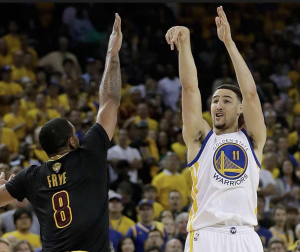 It’s no secret that cuts, curls, replacements and flares have been lost arts in basketball. Dribble-drive and screen/roll oriented offenses came into vogue and players were forced to comply with coaches’ systems and drive gaps, spot up for triple attempts, set ball screens or use ball screens (even when the individual players might not be very good at any of the above.)
It’s no secret that cuts, curls, replacements and flares have been lost arts in basketball. Dribble-drive and screen/roll oriented offenses came into vogue and players were forced to comply with coaches’ systems and drive gaps, spot up for triple attempts, set ball screens or use ball screens (even when the individual players might not be very good at any of the above.)
Quite frankly, playing without the ball in many of these systems literally means standing in the corner. Just a quick aside, I’m familiar with a transfer this season from one D1 school to another and the reason he said was transferring was that he “wanted to do more than stand in the corner”.
Whether it is a weak-side cut or a strong-side backdoor cut, these cuts are generally the result of defenses trying to deny passes to shooters beyond the arc. Consequently, these shooters are cutting to free themselves. A note-some folks are calling these cuts “dives”.
No matter what they are called, the result is that the defense has to “compress” to protect against the cut and that compression by several defenders allows for the NEXT shooter to be more open beyond the arc than he would have been otherwise.
It also means that the cutter himself has a better chance to be open the next time he breaks to the arc-because his defender now knows that he also has to defend the cut.
The counter to the cut, of course, is the replacement. That term and action aren’t used a lot these days but it’s a very effective maneuver, but only if the cutter threaten the basket and his defender with cuts. To respect the cut, the defender has to “dig down” into the paint to not allow the cutter to “cross his face”. When this happens, the cutter aborts his cut and “replaces” himself or pops out for an open look.
With two man plays away from the ball (think down-screen or up-screen), the defender has to choose to go over or under the screen. If he goes under, we curl; if he goes over, we flare. Just as cuts and replacements work hand-in-hand, so do flares and curls. A key point here is that either a down-screen or up-screen doesn’t have to be intentional. I actually maintain the best screens are unintentional-when the “receiver” finds another offensive body and uses it and makes a read to curl or flare.
There are many players who can be effective with those two combinations away from the ball who otherwise wouldn’t be as effective on the ball as primary dribble-drivers or screen/roll drivers.
If one closely watches the very best NBA and NCAA offensive teams these days, what one is actually seeing is a combination of screen roll, dribble drive, occasional post-ups and lots of action away from the ball using quick ball movement and a high number of passes. One might even use another old-fashioned term of “free-lance” to describe the phenomenon. More free and open than motion, in its purest form, this hybrid free-lance is harder to scout and prepare for but at the same time, also much more demanding to organize and teach.



Not sure if we have different terminology, but if the defender goes over the screen, i.e “tags numbers, one should curl. A flair cut would have the player run back to the defender who has gone over the screen. Likewise, if the defender goes under the screen, that is when to use the flair, and the screener can help by rescreening.
Coach, Thanks for your note. We must be using different terminology. The example I have in mind is a wing on the left reversing the ball to the top of the key and down screening for a teammate on the left block. If the left block defender fights over the top, I want the receiver to flair to the corner, in effect the screener is “pinning” the defender on the top side. If the defender goes under the screen, I want the receiver to curl toward the top getting the defender on his back and “chasing”. It seems like we’re both comfortable with our interpretations.